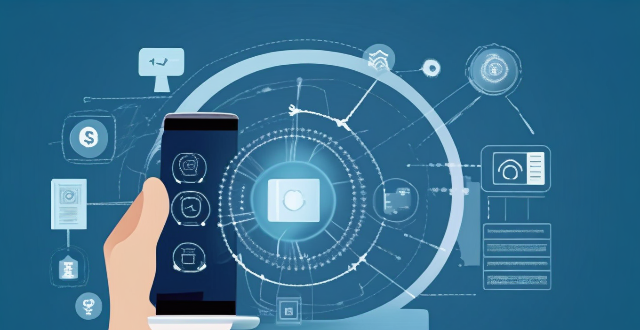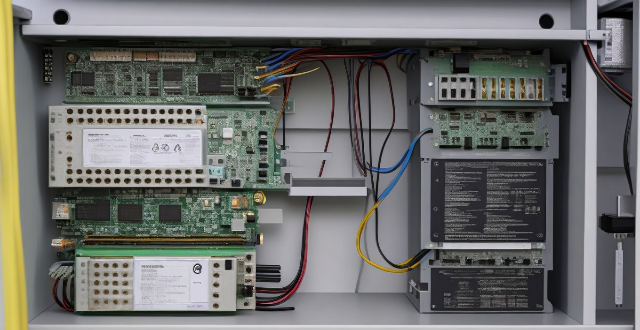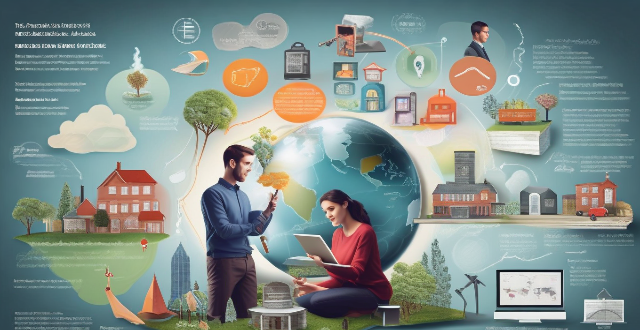Flight Connect

Can I still get a tax refund if I have a connecting flight within the EU ?
To obtain a tax refund when you have a connecting flight within the EU, follow these steps: purchase goods in a participating store, complete the tax-free shopping form, obtain a customs stamp, and claim your tax refund. Having a connecting flight does not affect your ability to get a tax refund.

What should I include in my carry-on luggage for a long-haul flight ?
When packing your carry-on luggage for a long-haul flight, it's important to consider the items that will make your journey more comfortable and enjoyable. Here are some essential items to include: ### 1\. Personal Items - **Passport and travel documents**: Make sure to bring your passport, visa (if required), boarding pass, and any other necessary travel documents. - **Wallet and money**: Bring your wallet with cash, credit cards, and any currency you may need for your destination. - **Phone and charger**: Don't forget your phone and its charger, as well as any necessary adapters or converters for international use. - **Medication and health products**: If you have any medication or health products that you need during the flight, make sure to pack them in your carry-on luggage. - **Personal hygiene items**: Pack a small toiletry bag with items such as toothbrush, toothpaste, deodorant, hand sanitizer, and moisturizer. ### 2\. Comfort Items - **Snacks and drinks**: Bring some snacks and water to keep yourself hydrated and satisfied during the flight. - **Entertainment**: Pack a book, magazine, or e-reader to keep yourself entertained during the flight. You can also download movies or TV shows onto your device beforehand. - **Headphones or earbuds**: Bring headphones or earbuds to listen to music, watch movies, or block out noise during the flight. - **Travel pillow and blanket**: A travel pillow and blanket can help you get comfortable and restful during the flight. - **Eye mask and earplugs**: An eye mask and earplugs can help you block out light and noise, allowing you to sleep more easily during the flight. ### 3\. Clothing and Accessories - **Comfortable clothing**: Wear comfortable clothing on the flight, such as stretchy pants or leggings, a loose-fitting shirt, and comfortable shoes. - **Sweater or jacket**: Bring a sweater or jacket to keep yourself warm during the flight, especially if you tend to get cold easily. - **Socks and slippers**: Pack a pair of socks and slippers to keep your feet warm and comfortable during the flight. - **Sunglasses and hat**: Bring sunglasses and a hat to protect yourself from the sun when you arrive at your destination. ### 4\. Miscellaneous Items - **Reusable water bottle**: Bring an empty reusable water bottle to fill up after passing through security, rather than buying bottled water at the airport. - **Pen and paper**: Bring a pen and paper to jot down notes or ideas during the flight. - **Travel journal**: If you enjoy writing, consider bringing a travel journal to document your experiences during the trip. - **Small backpack or purse**: Use a small backpack or purse to store all of your carry-on items, making it easy to access them during the flight.

How do I connect to a public Wi-Fi network ?
Connecting to a public Wi-Fi network is essential in today's digital age. Here are the steps: locate the Wi-Fi settings, select the network, connect to it, verify the connection, and troubleshoot if needed. Remember to use a VPN, limit sensitive activities, and keep software updated for security reasons.

Can I connect my burglar alarm system with my smartphone ?
The text discusses the possibility of connecting a burglar alarm system to a smartphone. It mentions that most modern security systems come equipped with smart technology that allows for remote access and control via a mobile app, enabling users to monitor and manage their home security from anywhere at any time. The benefits of such connectivity include remote access, live video surveillance, two-way audio, customizable alerts, and integration with other smart home devices. The process of connecting the system involves choosing a compatible system, downloading the app, creating an account, connecting to Wi-Fi or cellular network, pairing devices, customizing settings, and starting monitoring. Overall, connecting a burglar alarm system to a smartphone provides peace of mind by allowing users to stay informed about the safety of their home regardless of their location.

How do you connect an AC stepping motor to a microcontroller or driver board ?
Connecting an AC stepping motor to a microcontroller or driver board involves selecting the right board, connecting the power supply, attaching the motor, programming the board, testing the connection, and troubleshooting any issues. Materials needed include the motor, board, power supply, wires, and optionally a breadboard for temporary connections. Tips include double-checking connections and code, using a breadboard before soldering, and following safety guidelines when working with high voltages.

What are the challenges faced by air travel industry due to changing climate patterns ?
The air travel industry is facing numerous challenges due to changing climate patterns, including extreme weather events, altered flight paths, airport infrastructure damage, health risks, and environmental concerns. These challenges can impact flight schedules, increase maintenance costs, and require changes to air traffic control systems. To adapt, airlines must invest in innovative solutions that prioritize sustainability and resilience.

How early should I arrive at the airport before my flight ?
When it comes to arriving at the airport before your flight, there are several factors to consider. Here are some general guidelines to help you plan your trip: - For domestic flights within the United States or other countries, it is generally recommended to arrive at the airport at least 2 hours before a non-peak hour flight and 3 hours before a peak hour (morning and evening rush hours) flight. - For international flights departing from the United States or other countries, it is generally recommended to arrive at the airport at least 3 hours before a non-peak hour flight and 4 hours before a peak hour (morning and evening rush hours) flight. - If you have any special circumstances such as checking bags, traveling with children or elderly persons, or needing extra time for security screenings, customs, and immigration procedures, you may want to allow for more time. - Additional factors that can impact how early you should arrive at the airport include airport size and location, time of day, transportation method, security measures, and special circumstances. Overall, it is always better to arrive at the airport earlier rather than later to avoid any last-minute stress or missed flights. Plan ahead and give yourself plenty of time to navigate through the airport processes smoothly.

What are some tips for finding cheap flights and accommodations ?
Finding cheap flights and accommodations can be a daunting task, but with the right strategies, you can save money and still have a great travel experience. Here are some tips to help you find affordable options: ## 1\. Be Flexible with Your Travel Dates One of the best ways to find cheap flights and accommodations is to be flexible with your travel dates. Prices often fluctuate depending on the time of year, day of the week, and even the time of day. If possible, try to travel during off-peak seasons or midweek when prices tend to be lower. ## 2\. Book in Advance or Last Minute Booking your flight and accommodation well in advance can often result in significant savings. However, if your schedule allows it, booking last minute can also lead to great deals as airlines and hotels look to fill empty seats and rooms. ## 3\. Use Flight Aggregator Websites Flight aggregator websites like Skyscanner, Kayak, and Google Flights allow you to compare prices across multiple airlines and find the best deals. These sites often have features that enable you to set price alerts or search for flights from nearby airports, which can sometimes be cheaper. ## 4\. Consider Alternative Airports Flying into an alternative airport near your destination can sometimes result in lower airfare. For example, flying into Newark instead of JFK in New York City might save you money on your flight. ## 5\. Sign Up for Newsletters and Loyalty Programs Signing up for newsletters and loyalty programs from airlines and hotels can provide you with exclusive discounts and promotions. These offers can help you save money on future bookings. ## 6\. Use Credit Card Rewards If you have a credit card that offers travel rewards, consider using those rewards to pay for your flights or accommodations. This can significantly reduce the cost of your trip without having to spend additional money out of pocket. ## 7\. Look for Package Deals Sometimes booking a flight and hotel together as a package deal can be cheaper than booking them separately. Travel agencies and online booking platforms often offer package deals that include both elements of your trip at a discounted rate. ## 8\. Avoid Peak Travel Seasons Traveling during peak seasons like summer or holidays can be more expensive due to high demand. If possible, try to plan your trip during off-peak seasons when prices are generally lower. ## 9\. Use Budget Airlines and Accommodations Budget airlines and accommodations can offer significant savings compared to their full-service counterparts. While they may not provide all the amenities of more expensive options, they can be a great way to save money on your trip. ## 10\. Negotiate with Hotels Directly Calling hotels directly and asking about any available discounts or promotions can sometimes result in better rates than booking online. It's always worth asking if there are any unadvertised deals available.

What are the most common mistakes travelers make at the airport ?
Traveling through airports can be stressful, but avoiding these common mistakes can make the experience smoother and more enjoyable. Here are some of the most common mistakes travelers make at the airport: 1. Not checking in online before arriving at the airport, which can lead to long wait times and potentially missing your flight. 2. Arriving late to the airport, which can cause stress and anxiety as you rush to get through security and find your gate. 3. Overpacking in your carry-on luggage, which can make it harder to navigate through the airport and result in having to pay extra fees if your bag exceeds weight or size restrictions. 4. Not being prepared for security checks, which can slow you down and cause delays. 5. Not knowing where your gate is located before heading to the airport, which can cause confusion and potentially missing your flight. 6. Not charging electronics before heading to the airport, which can leave you without access to important devices during your flight or while waiting at the airport.

How can I make the most of a long layover at the airport ?
How to Make the Most of a Long Layover at the Airport Having a long layover at the airport can be both a blessing and a curse. On one hand, it gives you more time to relax and explore the airport amenities. On the other hand, it can also be boring and frustrating if you don't know how to make the most of your time. Here are some tips on how to make the most of a long layover at the airport: 1. **Explore the Airport** * Visit the Duty-Free Shops: Duty-free shops offer a wide range of products, from cosmetics and perfumes to electronics and souvenirs, often at discounted prices. Take advantage of this opportunity to do some shopping or pick up a gift for someone special. * Check Out the Food Courts: Airport food courts offer a variety of dining options, from fast food to sit-down restaurants. Use this time to try out new dishes or enjoy your favorite meal before your next flight. * Visit the Art Galleries and Exhibits: Many airports feature art galleries and exhibits showcasing local artists and culture. Take a stroll through these areas to learn more about the destination you're visiting or passing through. 2. **Relax and Recharge** * Find a Quiet Spot to Read or Work: Look for quiet areas in the airport where you can settle down with a good book or catch up on work without distractions. Many airports have designated quiet zones or business centers equipped with comfortable seating and charging stations. * Get a Massage or Spa Treatment: Some airports offer massage chairs, spa treatments, and even yoga classes to help travelers relax and rejuvenate during their layover. Check out the airport's website or ask staff for information on available services. * Take a Nap in a Lounge or Sleep Pod: If you need to rest, consider paying for access to an airport lounge that offers comfortable seating, snacks, and beverages. Alternatively, some airports have sleep pods where you can rent a private space to take a nap for a few hours. 3. **Stay Connected** * Use Free Wi-Fi: Most airports offer free Wi-Fi service, allowing you to stay connected with friends, family, and work while waiting for your next flight. Look for signs indicating the network name and password, or ask airport staff for assistance. * Charge Your Devices: Make sure your devices are fully charged before boarding your next flight by using the available charging stations throughout the airport. Some airports also offer portable chargers for rent or purchase if you need extra power. 4. **Stay Entertained** * Watch Movies or TV Shows: Many airports have screens displaying movies, TV shows, and live sports events. Find a comfortable spot near one of these screens and enjoy the entertainment while waiting for your flight. * Download Entertainment Apps: Download apps like Netflix, Hulu, or Amazon Prime Video before your trip so you can stream movies, TV shows, and music offline during your layover. This way, you won't have to worry about using data or finding Wi-Fi connections.

How does a network bridge improve internet connectivity ?
A network bridge is a device that connects two or more networks at the data link layer, offering benefits such as reduced congestion, increased security, enhanced performance, cost-effectiveness, and compatibility. It improves internet connectivity by segregating traffic, filtering based on MAC addresses, optimizing routing, and extending the use of existing infrastructure. Bridges are applicable in home, enterprise, and public access networks for connecting devices, separating departmental networks, and providing guest access.

**Is there a limit to the number of cameras I can connect to iCloud for HomeKit Secure Video ?
HomeKit Secure Video allows users to securely store video from their home security cameras in iCloud. The current limit set by Apple is up to ten cameras per account, including both indoor and outdoor cameras. If you have more than ten cameras, you will need to choose which ones are connected to iCloud for HomeKit Secure Video. Despite the limit on the number of cameras, there are several benefits to using HomeKit Secure Video, such as end-to-end encryption, motion detection, activity zones, and iCloud storage.

How can I plan a budget-friendly trip to a popular destination ?
Traveling to popular destinations doesn't have to be expensive. Here are tips to plan a budget-friendly trip: 1. **Research and Choose an Affordable Time to Travel**: Go during off-peak or shoulder seasons for lower prices and smaller crowds. 2. **Book Flights Strategically**: Be flexible with dates, use flight aggregator websites, and set price alerts. 3. **Find Budget-Friendly Accommodations**: Consider hostels, Airbnb, vacation rentals, and look for hotel deals. 4. **Save on Transportation**: Use public transit, walk, or rent a bike instead of renting a car or taking taxis. 5. **Plan Your Meals Carefully**: Grocery shop and eat at local establishments for budget-friendly meals. 6. **Choose Free or Low-Cost Activities**: Enjoy free walking tours, museum days, and nature exploration. 7. **Pack Smart**: Bring only essentials and reusable items to avoid extra fees and hassle. 8. **Stay Connected Without Breaking the Bank**: Use local SIM cards and free Wi-Fi spots. 9. **Manage Your Money Wisely**: Use budgeting apps and carry a mix of cash and card. 10. **Embrace the Unexpected**: Leave room for spontaneous adventures and connect with locals for insider tips.

How do I find cheap flights without sacrificing comfort ?
Finding cheap flights without sacrificing comfort is a challenge, but it's not impossible. Here are some tips to help you find the best deals on comfortable flights: Being flexible with your travel dates can make a significant difference in the price of your flight. Try to avoid peak travel times like holidays and weekends, as these tend to be the most expensive times to fly. Instead, aim to travel during off-peak times, such as midweek or early morning/late evening flights. Booking early can often get you the best deals, as airlines tend to increase prices closer to the departure date. However, if you're willing to take a risk, booking last minute can also yield some great savings. Just be prepared to compromise on your preferred flight time and seating arrangements. Flight aggregator websites like Skyscanner and Kayak allow you to compare prices across multiple airlines and find the cheapest options. These sites often have filters that allow you to prioritize factors like layover time, cabin class, and airline ratings, so you can find flights that meet your comfort requirements. Many airlines offer newsletters and loyalty programs that provide exclusive discounts and deals to subscribers. By signing up for these, you can stay informed about upcoming sales and promotions that may not be advertised elsewhere. If you live near multiple airports, consider flying out of an alternative airport instead of the main one. These smaller airports often have cheaper flights due to lower demand and fewer flight options. Just be sure to factor in the cost of transportation to and from the airport when comparing prices. Hidden city ticketing involves booking a flight with a layover at your desired destination instead of the final destination listed on the ticket. This can sometimes result in significant savings, but it's important to note that it's against most airline policies and can result in complications if discovered. If you're willing to pay a bit more for extra legroom and comfort, consider choosing economy plus seats. These seats are typically located near the front of the economy section and offer more space than standard economy seats. They're often available for a reasonable fee, especially if booked in advance. Packing light can save you money on baggage fees and make your trip more comfortable overall. Most airlines allow passengers to bring one carry-on bag and one personal item for free, so take advantage of this by packing only the essentials and avoiding overweight baggage charges.

What are the best tips for navigating through a busy airport ?
The text offers several tips for navigating through a busy airport, including checking in online, packing light, arriving early, being prepared for security checks, familiarizing oneself with the airport layout, using technology, keeping essentials handy, and staying informed. These strategies aim to help travelers save time, reduce stress, and ensure a smoother journey through the airport.

What safety measures are taken during a rocket launch and how have they improved over time ?
Rocket launches are complex and dangerous events that require numerous safety measures to ensure the success of the mission and the well-being of all personnel involved. Over time, these safety measures have evolved and improved significantly due to advancements in technology, increased understanding of potential risks, and lessons learned from past incidents. Before a rocket is launched, several safety measures are taken to minimize risks, such as design reviews, quality assurance testing, personnel training, range safety, and weather checks. Once the rocket is launched, additional safety measures come into play, including telemetry tracking, flight termination systems, and emergency evacuation plans. After the rocket has successfully reached space, there are still safety considerations, such as debris tracking and environmental cleanup. Safety measures during rocket launches have improved significantly over time due to advancements in technology, increased understanding of risks, lessons learned from past incidents, and stricter regulations and standards developed by government agencies and industry organizations.

How does technology facilitate lifelong learning ?
Technology has revolutionized education, making it more accessible, interactive, and personalized. It facilitates lifelong learning through online resources, digital libraries, simulation software, gamification, adaptive platforms, mobile learning, social media groups, online workshops, instant feedback, cost efficiency, and globalization of education. Technology offers a wealth of benefits for learners of all ages and backgrounds.